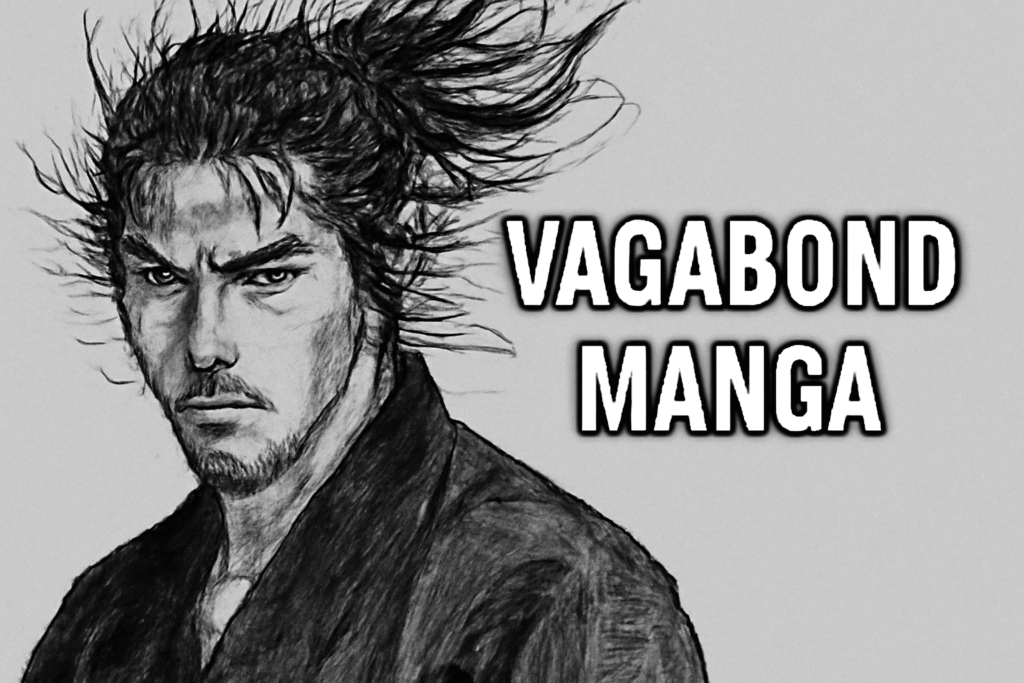Vagabond Manga stands as one of the most celebrated works in the world of Japanese graphic novels. Written and illustrated by the legendary Takehiko Inoue, this manga adapts Eiji Yoshikawa’s famous novel Musashi into a stunning visual narrative that explores themes of self-discovery, the way of the sword, and the complex human psyche. For manga fans, especially those who appreciate a blend of action, philosophy, and historical context, Vagabond offers a rich and captivating journey.
If you’re looking for an immersive, thought-provoking manga that combines exceptional art with a deep philosophical exploration of life, Vagabond is a must-read. In this article, we’ll explore the essence of Vagabond Manga, why it stands out in the world of manga, and how its influence has shaped the genre. We’ll also offer insights into the legacy of Vagabond and why it continues to resonate with readers around the world.
What is Vagabond Manga?
Vagabond Manga is a historical fiction series written and illustrated by Takehiko Inoue, based on Eiji Yoshikawa’s novel Musashi. The manga debuted in 1998 and ran for over a decade, concluding in 2015 after a total of 37 volumes. It’s set during the tumultuous Sengoku and Edo periods of Japan and follows the journey of Miyamoto Musashi, one of Japan’s most famous swordsmen, as he embarks on a personal quest to discover the meaning of true strength.
At its core, Vagabond is not just about sword fighting or historical battles; it’s a story of growth, inner struggle, and the philosophy of the samurai. It delves deep into the complexities of human nature, presenting characters who are torn between the need for vengeance, the pursuit of self-improvement, and the search for inner peace.
The Story of Vagabond Manga
The manga follows the life of Miyamoto Musashi, a real-life historical figure known for his martial prowess and mastery of the katana. Musashi’s journey begins after a brutal battle where he kills his first opponent at the age of 17. The story traces his path through numerous battles, encounters with other great warriors, and his internal struggle with the concept of the way of the sword (Kenjutsu). Musashi is portrayed not just as a fighter, but as a man seeking to understand the true purpose of his strength.
Musashi’s path to self-discovery takes him across Japan, where he challenges powerful opponents, forms alliances, and questions the meaning of victory and peace. His main rival, Sasaki Kojiro, also plays a pivotal role in the story, and their eventual duel is a climactic moment in both the manga and historical legend. The themes of honor, fate, and destiny constantly intertwine, offering readers a deep reflection on life’s purpose.
Why Vagabond Manga Stands Out

Masterful Art by Takehiko Inoue
One of the most striking aspects of Vagabond Manga is Takehiko Inoue’s exceptional art style. Known for his meticulous attention to detail, Inoue’s illustrations bring the world of Vagabond to life in breathtaking ways. The fluidity and dynamism of his fight scenes are balanced by quiet moments of introspection, allowing readers to appreciate both the action and the philosophical themes of the manga.
Inoue’s use of brushstrokes and stark black-and-white contrasts contributes to the manga’s atmosphere, emphasizing the mood of each scene. His portrayal of the characters’ emotions, particularly Musashi’s internal battles, is done with such subtlety that readers can almost feel the tension and turmoil without the need for lengthy exposition.
Rich Themes and Philosophical Depth
At its heart, Vagabond explores profound themes that resonate with readers on multiple levels. The manga delves into the nature of strength—both physical and spiritual—asking questions about what it truly means to be a warrior. Is it about mastering the sword, or is it about understanding oneself? Can one ever achieve true peace through violence?
The philosophical underpinning of the manga is influenced by the Zen philosophy, which often emphasizes the importance of living in the moment and the idea of non-attachment. Throughout Musashi’s journey, readers are introduced to various characters who embody different aspects of these teachings. Whether it’s through quiet introspection or intense confrontation, Vagabond challenges the reader to think about their own place in the world and the meaning of personal growth.
Well-Developed Characters
In addition to Musashi, Vagabond features a wide range of complex characters, each contributing to the narrative in their own unique way. Some of the most notable characters include:
- Sasaki Kojiro: Musashi’s main rival, whose obsession with defeating him drives much of the plot’s tension.
- Otsu: Musashi’s love interest, who plays a significant role in his emotional development.
- Takuan Soho: A Zen monk who offers spiritual guidance to Musashi, urging him to look beyond mere violence.
- Hon’iden Matahachi: Musashi’s childhood friend, whose path diverges sharply from his own, representing a more conventional form of heroism.
Each of these characters has their own motivations and struggles, and their interactions with Musashi are integral to his development as a warrior and a human being.
Historical and Cultural Richness
Another reason Vagabond stands out is its deep connection to Japanese history and culture. While the story is fictionalized, many of the events, characters, and locations are rooted in actual historical events. Through Musashi’s journey, readers gain insight into Japan’s feudal era, the philosophy of the samurai, and the societal structures that shaped this tumultuous period.
The historical context adds a layer of realism to the story, making it not only an engaging narrative but also an educational experience. Fans of Japanese history and culture will find Vagabond an invaluable window into the past.
The Impact of Vagabond Manga
Since its release, Vagabond has received widespread critical acclaim and won numerous awards. Its influence extends beyond the realm of manga, inspiring adaptations in other media, including films, novels, and even video games. The manga’s success is a testament to its universal appeal, as it transcends the typical boundaries of the medium to become a landmark work of storytelling.
In addition to its critical success, Vagabond has also gained a dedicated global fanbase. Its themes of self-discovery, personal growth, and the human condition resonate with readers worldwide. Whether you’re a fan of historical fiction, martial arts, or philosophical exploration, Vagabond offers something for everyone.
How to Read Vagabond Manga
If you’re looking to dive into the world of Vagabond, you can find the manga in both print and digital formats. The series is available in English translation from VIZ Media, making it accessible to an international audience. The art is just as stunning in digital form, so you can enjoy the full experience whether you’re reading on paper or a screen.
For those who want to delve deeper into the story, there are also supplementary materials, including Vagabond‘s “official guidebooks” that provide background information on the characters, the historical context, and Inoue’s creative process.
Vagabond is best read with an open mind, ready to reflect on the themes of self-realization, the way of the sword, and the human condition. Whether you’re an avid manga reader or a newcomer to the genre, Vagabond offers an unforgettable journey.
Conclusion
Vagabond Manga is an unparalleled work that seamlessly blends action, philosophy, and historical fiction into a captivating narrative. With its richly developed characters, intricate themes, and masterful artwork, it stands as one of the finest manga of all time. Whether you’re a fan of samurai stories, philosophical musings, or breathtaking illustrations, Vagabond has something to offer.
If you haven’t yet explored the world of Vagabond, now is the perfect time to start. Immerse yourself in the journey of Miyamoto Musashi, and discover why this masterpiece continues to capture the hearts and minds of manga fans around the world.




